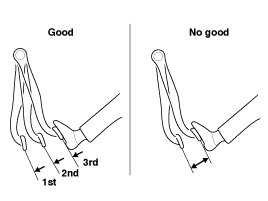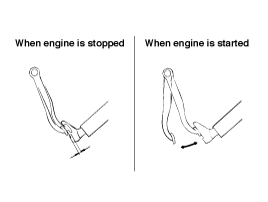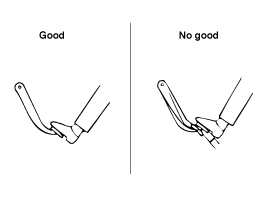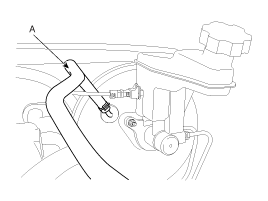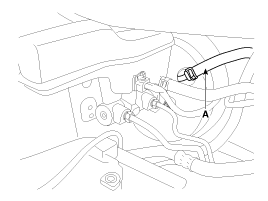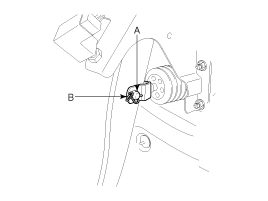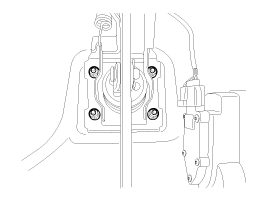Hyundai Tucson: Brake System / Brake Booster Repair procedures
Hyundai Tucson (LM) 2010-2015 Service Manual / Brake System / Brake System / Brake Booster Repair procedures
| Brake Booster Operating Test |
For simple checking of the brake booster operation, carry out the following tests.
| 1. |
Run the engine for one or two minutes, and then stop it. If
the pedal depresses fully the first time but gradually becomes higher
when depressed succeeding times, the booster is operating properly, if
the pedal height remains unchanged, the booster is inoperative.
|
| 2. |
With the engine stopped, step on the brake pedal several times.
Then step on the brake pedal and start the engine. If the
pedal moves downward slightly, the booster is in good condition. If
there is no change, the booster is inoperative.
|
| 3. |
With the engine running, step on the brake pedal and then
stop the engine.Hold the pedal depressed for 30 seconds. If the pedal
height does not change, the booster is in good condition, if the pedal
rises, the booster is inoperative.
If the above three tests are okay, the booster performance can be determined as good.
Even if one of the above three tests is not okay, check the check valve, vacuum hose and booster for malfunction.
|
| Removal |
| 1. |
Turn ignition switch OFF and disconnect the negative (-) battery cable. |
| 2. |
Disconnect the battery positive terminal and then remove the battery. |
| 3. |
Disconnect the ECM connector and then ECM and battery tray. |
| 4. |
Disconnect the vacuum hose (A) from the brake booster.
[LHD]
[RHD]
|
| 5. |
Remove the master cylinder.
(Refer to Master cylinder) |
| 6. |
Remove the snap pin (A) and clevis pin (B).
|
| 7. |
Remove the mounting nuts.
|
| 8. |
Remove the brake booster. |
| Inspection |
| 1. |
Inspect the check valve in the vacuum hose.
|
| 2. |
Check the boot for damage. |
| Installation |
| 1. |
Installation is the reverse of removal.
|
| 2. |
Adjust the brake pedal height and free play.
(Refer to Brake pedal height and free play adjustment) |
| 3. |
After installing, bleed the brake system.
(Refer to Brake system bleeding) |
 Brake Booster Components and Components Location
Brake Booster Components and Components Location
Components
1. Brake booster2. Master cylinder assembly3. O-ring
...
 Master Cylinder Components and Components Location
Master Cylinder Components and Components Location
Components
1. Reservoir cap2. Reservoir3. Grommet4. Master cylinder
...
Other information:
Hyundai Tucson (LM) 2010-2015 Service Manual: Refrigerant line Repair procedures
Replacement
1.
Discharge refrigerant from refrigeration system.
2.
Replace faulty tube or hose.
Cap the open fittings immediately to keep moisture or dirt out of the system.
3.
Tighten joint of bolt or nut to specified torque.
Connections s ...
Hyundai Tucson (LM) 2010-2015 Service Manual: Oil level sensor Repair procedures
Removal and Installation
[For Europe]
When the oil sensor signal fault occurs, refer to the DTC guide.
1.
Drain the engine oil.
2.
Remove the oil level sensor (A) after disconnecting the oil level sensor connector.
Tightening torque:
8.8 ~ 9.8N.m (0.9 ~ 1.0kgf.m, 6.5 ~ 7.2lb-ft)
...
© 2010-2025 www.htmanual.net

